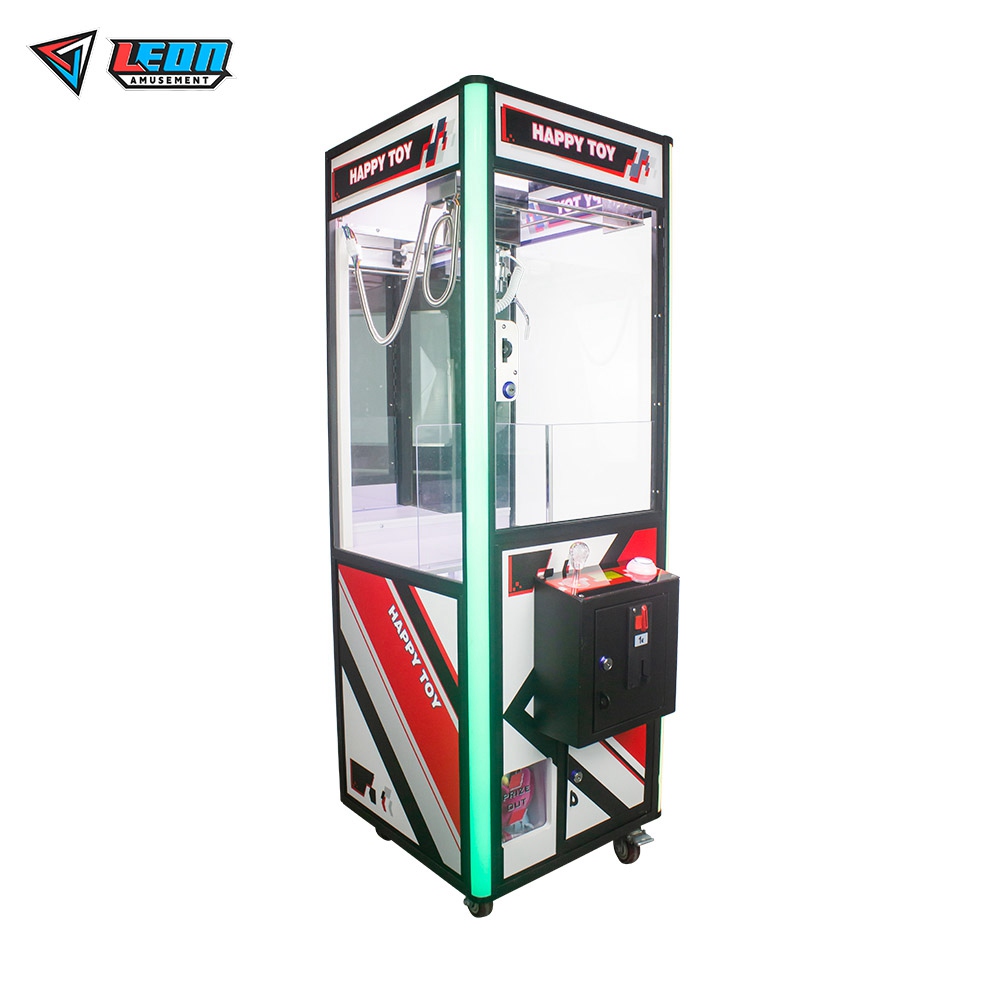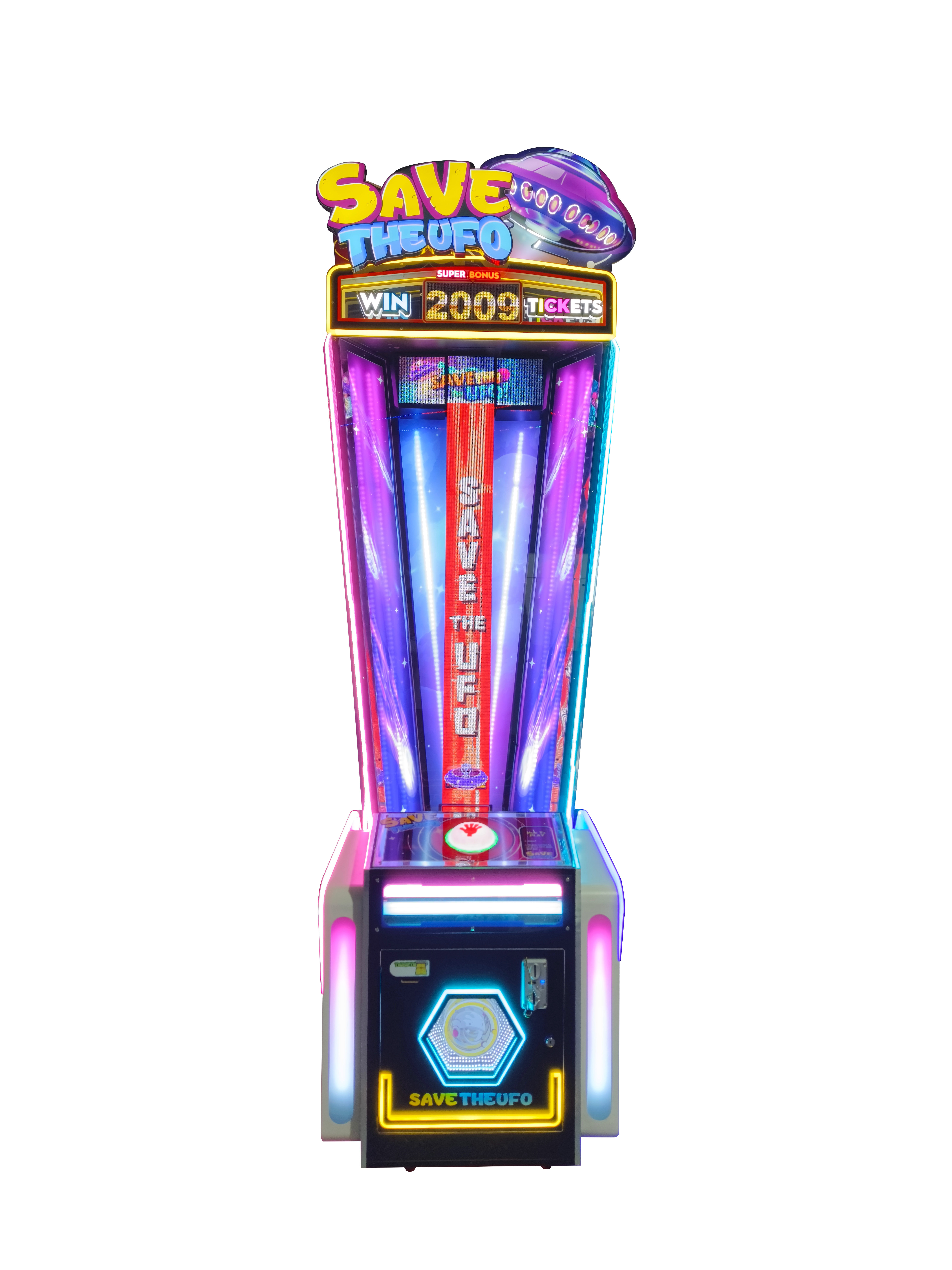The global claw machine market continues to grow due to the rising demand for interactive entertainment. The market is expected to exceed USD 10 billion by 2025, with a compound annual growth rate of 7%. Enhancing machine attractiveness and profitability through IP collaboration, scenario-based deployment, and digital operation has become the key strategy.
Table of Contents
ToggleDiversified Consumer Demand
With increased disposable income and improved living standards, global entertainment consumption demand has shown a trend of diversification. Traditional leisure and entertainment methods can no longer fully meet the growing needs of consumers. As a type of interactive entertainment equipment, claw machines have quickly attracted a large number of young people with their simple operation, strong entertainment value, and instant gratification. According to a report by Allied Market Research, the global claw machine market is expected to reach USD 4.8 billion by 2023 and maintain an annual growth rate of 5.2% over the next five years. This growth is mainly driven by the rising demand for interactive forms of entertainment.
In particular, the claw machine culture has deeply integrated into the daily lives of young people in the Asia-Pacific region. Claw machines have not only become a way to pass the time but have gradually evolved into a social activity. Social media has further amplified this trend. For example, topics like “Claw Machine Challenge” and “Claw Machine Check-in” are trending on social platforms in China, Japan, and South Korea. Many consumers take photos or record videos to share on social media right after successfully catching a toy, attracting friends to watch and interact. This social behavior, in turn, enhances the market influence of claw machines and drives more potential consumers to participate in this entertainment activity.
Scenario-based Experience and Business Model Innovation
Traditional claw machine deployments were mostly concentrated in amusement parks and specific venues, but now their application scenarios have expanded to commercial complexes, supermarkets, convenience stores, subway stations, and various other settings. This scenario-based deployment not only increases the exposure of claw machines but also strengthens the interactive connection with consumers. Many businesses set up themed claw machines during major holidays or large-scale promotions to attract customer attention. For example, a shopping mall set up a Christmas-themed claw machine during the Christmas season, successfully attracting a large number of consumers to stop and participate in the game.
Business model innovation is also an important factor driving the growth of the claw machine market. In the past, the operating model of claw machines was mainly single-device rental or sales. Now, more companies are introducing a comprehensive operating model of “equipment + content + service.” This model includes not only equipment deployment and management but also theme activity planning, user point systems, and online-offline integration services, significantly enhancing the attractiveness and profitability of claw machines. For example, a Japanese claw machine company introduced cloud-based claw machines, allowing users to remotely operate and catch physical toys through a mobile app, attracting a large number of home users. During the pandemic, the number of online users increased by more than 30% year-on-year.

IP Collaboration and Cross-industry Cooperation
In recent years, expanding the market for claw machines has become an important strategy, with increasing emphasis on IP collaboration and cross-industry cooperation. Cooperating with famous IPs and popular brands not only generates high income but also increases market influence for the claw machines themselves. Disney characters, Doraemon, and Pokémon are well-known examples of IP characters that have found wide applications in prize designs for claw machines. These IP characters have a wide fan base around the world, attracting a large number of loyal consumers who frequently visit claw machines. This phenomenon has allowed revenues from claw machine operators to far exceed those with ordinary prize configurations. Data from one claw machine manufacturer indicated that a single machine’s average daily revenue with an IP collaboration prize reached 1.5 times that of an ordinary machine. The payback period of popular IP machines was shortened to within three months.
Moreover, cross-industry cooperation has injected new vitality into the claw machine market. For example, Coca-Cola once collaborated with a claw machine brand to launch a “Bottle Cap Claw Machine,” in which consumers only needed to insert a bottle cap into the machine to get one free catch opportunity. It drew a large amount of traffic in the short term and enhanced brand recognition among the young consumer group. This cross-industry cooperation model not only opens up more consumption scenarios for the claw machine but also enhances the comprehensive influence of the brand in the market.
Regional Market Differentiation Strategy
In the global market, there are clear regional differences for the claw machine. The Asian market has become the main consumption area of the global claw machine market, including the major consumption markets: China, Japan, and South Korea. According to a market research firm, QYResearch, it is estimated that over 65% of the global market revenue of claw machines will come from the Asian market in 2022. Among them, within five years, the amount of devices in the Chinese market has doubled, while the market size is continuously expanding.
It is believed that the Asian market has been successful because of the close integration of the game with the local culture. For example, while Japan’s claw machine can provide all types of dolls with cartoon characters, some themed items like regional specialties and limited-edition toys will be added. The localized operation methods make the equipment not only more appealing but also stimulate the consumption desires of consumers. On the contrary, the European and American markets have low acceptance of the grasping machine, mainly appearing in amusement parks and big shopping malls. Western consumers favor large equipment and experience-based entertainment projects, while interest in small claw machines is relatively low. However, in recent years, with the increasing penetration of Asian culture in the field of entertainment, claw machines have gained popularity accordingly in the Western market. For example, some large shopping malls in the United States and Canada have developed Japanese-style grasping machines by adding local cultural factors into consideration, hence attracting young groups of consumers successfully.
Different regional markets each have their own regulations and cultural preferences that influence deployment strategies for the machines. Take some European countries, for example, which put stricter requirements on gambling-type entertainment equipment, requesting claw machines to be perfectly designed or operated in accordance with relevant regulations and asking companies to conduct enough compliance research and strategy adjustment when entering the market.

Post-pandemic Market Recovery Opportunities
During the COVID-19 pandemic, the global entertainment industry suffered a significant impact, with many offline entertainment venues forced to close, and the demand for claw machines temporarily suppressed. However, as the pandemic is gradually brought under control, the demand for offline entertainment is beginning to rebound. According to data from Frost & Sullivan, the global claw machine market’s compound growth rate reached 12% in 2021, with the Asia-Pacific region showing the most significant growth. This is mainly due to the concentrated release of consumer demand for offline entertainment and the non-gathering nature of claw machine equipment.
Compared with traditional indoor amusement parks, claw machines can provide interactive experiences while maintaining social distance. Each operation is short, and the distance between devices is relatively large, reducing the risk of virus transmission, making consumers more inclined to choose claw machines for offline entertainment. In addition, during the pandemic, many claw machine operators also introduced contactless disinfection measures and adopted functions such as QR code payments and app controls, further enhancing consumer trust and participation.
As the global offline entertainment market gradually recovers, the claw machine market will embrace more opportunities. Especially in the Asian market and some countries with faster post-pandemic recovery, the growth potential of claw machines remains enormous. In the future, the expansion of the claw machine market will not only rely on the increase in the number of devices but also require more innovation in scenario applications, product design, and service models to better meet the needs of different markets and consumer groups.








